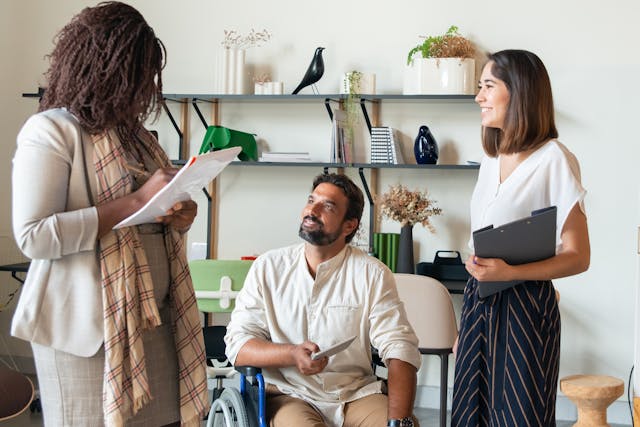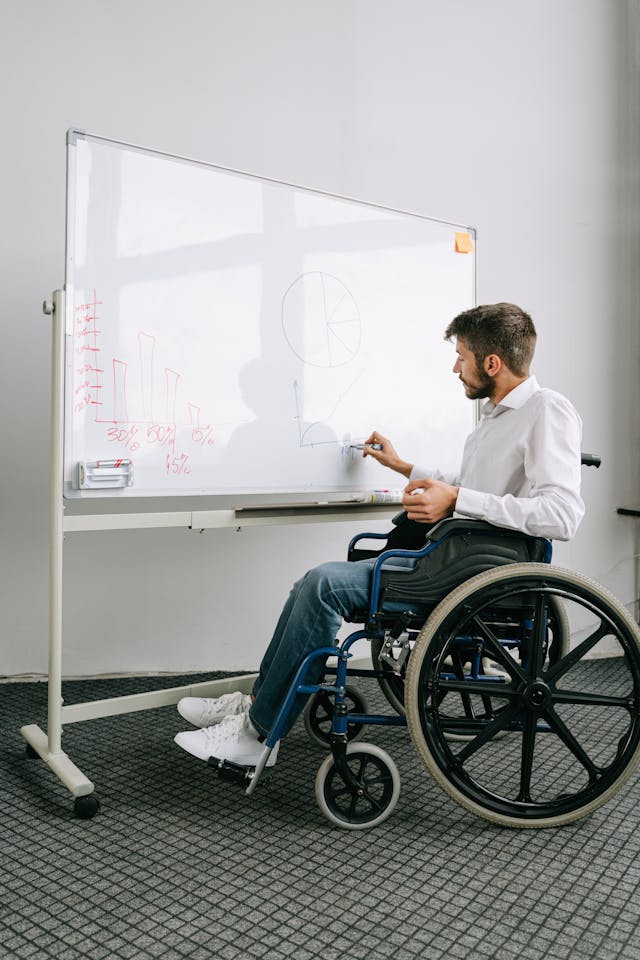Introduction
Disability mainstreaming in projects/programs is an essential component of inclusive development. As global awareness of disability rights grows, governments, NGOs, donors, and development agencies are recognizing the need to embed disability inclusion into every stage of their interventions—not as a separate initiative, but as an integrated and systemic approach.
This course equips project designers, program managers, field implementers, and policymakers with the tools and knowledge needed to ensure that people with disabilities are meaningfully included in planning, implementation, and evaluation. Drawing from global conventions, national strategies, and local best practices, this course helps professionals meet legal obligations and improve project impact and equity.

What Is Disability Mainstreaming?
Disability mainstreaming refers to the systematic integration of disability perspectives into all stages of project and program development. Instead of creating parallel programs for persons with disabilities, it aims to make mainstream systems and services accessible to everyone—regardless of physical, sensory, intellectual, or psychosocial ability.
The goal is not just inclusion but equal participation, access, and opportunity, aligned with the United Nations Convention on the Rights of Persons with Disabilities (UNCRPD) and Sustainable Development Goal 10 (reducing inequalities).
Course Objectives
By the end of this course, participants will:
- Understand the social, legal, and human rights dimensions of disability inclusion.
- Learn the difference between inclusive design, disability-specific actions, and mainstreaming.
- Conduct disability-focused situational analyses.
- Identify and remove environmental, attitudinal, and institutional barriers.
- Integrate inclusive indicators and data collection methods in M&E systems.
- Align projects with global frameworks such as the UNCRPD and SDGs.
Why Disability Mainstreaming Is Important in Development
Upholding Human Rights
Mainstreaming disability ensures that projects and programs respect the rights of people with disabilities to participate fully in society, including access to services, employment, education, and healthcare.
Enhancing Program Impact
When people with disabilities are excluded, development efforts are incomplete. Inclusive programming increases effectiveness, reach, and sustainability.
Fulfilling Legal and Policy Obligations
Countries that have ratified the UN Convention on the Rights of Persons with Disabilities are legally bound to ensure inclusive service delivery. Donor agencies and global institutions increasingly require disability-responsive design and reporting.
Advancing Social Equity
Disability often intersects with poverty, gender, age, and ethnicity. Disability mainstreaming reduces marginalization and helps ensure that no one is left behind.
Models and Approaches to Disability Inclusion
Medical vs. Social Models of Disability
Participants will explore the key shift in understanding disability:
- Medical model: Sees disability as an individual problem to be fixed.
- Social model: Sees disability as a result of societal barriers, not impairments.
This course uses the social model and rights-based approach as the foundation of all planning and action.
Twin-Track Approach
A successful strategy includes:
- Mainstreaming disability in all activities (e.g., making training centers accessible)
- Targeted actions for people with disabilities (e.g., assistive device programs)
How to Integrate Disability Mainstreaming Across the Project Cycle
This module provides step-by-step guidance on incorporating disability inclusion into every project phase.
1. Project Design and Planning
- Conduct a disability situational analysis using inclusive community consultations.
- Identify existing barriers to participation (e.g., lack of accessible transport or negative stereotypes).
- Include persons with disabilities and their representative organizations in planning discussions.
- Establish inclusive project goals and objectives.
2. Resource Allocation and Budgeting
- Allocate funds for accessibility features (e.g., ramps, sign language interpreters).
- Use disability-inclusive budgeting tools to identify financial needs.
- Set aside funds for training staff and partners on disability inclusion.
3. Implementation
- Ensure physical and digital accessibility of program locations, materials, and services.
- Train staff and volunteers in disability etiquette and inclusive communication.
- Provide reasonable accommodations (e.g., flexible scheduling, plain-language documents).
- Partner with Disabled Persons’ Organizations (DPOs) for outreach and engagement.
4. Monitoring and Evaluation
- Collect disability-disaggregated data using inclusive tools.
- Use indicators that measure access, participation, and satisfaction of people with disabilities.
- Include people with disabilities in M&E activities as both data sources and evaluators.
You may also be interested in other courses in the Humanitarian and International Development
Inclusive Indicators and Data Collection
Monitoring inclusion requires more than counting participants. This course teaches participants how to develop and use:
- Quantitative indicators, such as:
- % of project beneficiaries with disabilities
- % of staff trained in disability inclusion
- % of facilities meeting minimum accessibility standards
- Qualitative indicators, such as:
- Satisfaction of persons with disabilities with service access
- Perceived improvements in dignity, independence, and community integration

Accessibility in Practice
Physical Access: Ramps, handrails, accessible toilets, elevators, signage
Communication Access: Braille, sign language, audio materials, easy-to-read formats
Digital Access: Screen reader-compatible websites, subtitles on videos, mobile accessibility
Social Access: Inclusive language, respectful attitudes, and gender-sensitive approaches
Engaging Stakeholders with Disabilities
Work with Disabled Persons’ Organizations (DPOs) for policy and program design.
Include persons with different types of disabilities: physical, sensory, intellectual, and psychosocial.
Apply intersectional lenses: e.g., women with disabilities, rural youth with disabilities, elderly with mobility limitations.
International Standards and Policy Frameworks
Participants will gain familiarity with key frameworks, including:

- United Nations Convention on the Rights of Persons with Disabilities (UNCRPD)
- 2030 Agenda for Sustainable Development, especially SDG 10 (Reduced Inequality) and SDG 4 (Inclusive Education)
- ILO Disability Inclusion Strategy
- World Bank Disability-Inclusive Development Guidance
Understanding these standards ensures projects meet donor requirements and legal obligations.
Who Should Attend
This course is ideal for:
- Project and program managers in government, NGOs, or donor-funded programs
- Disability focal points and inclusion officers
- Monitoring and evaluation professionals
- Humanitarian and development planners
- Social workers and community-based organization leaders
- HR managers and infrastructure designers
Methodology
This course uses an interactive, practice-oriented format:
- Expert-led lectures on global policy and legal frameworks
- Simulation exercises on inclusive project design
- Accessibility audits and inclusive budgeting tasks
- Case study discussions and group analysis
- Self-assessments and inclusion action planning
Participants will leave with a disability inclusion toolkit tailored to their organization’s context.nstreaming action plan ready to apply to their current or future projects.
Outcome for the Course Sponsor
Sponsoring this training demonstrates your commitment to rights-based, equitable, and sustainable development. It enhances your organization’s credibility with international donors, increases compliance with global standards, and improves community trust.
By enabling your teams and partners to embed disability inclusion in projects/programs, you position yourself as a leader in inclusive development—transforming systems and lives in the process.









